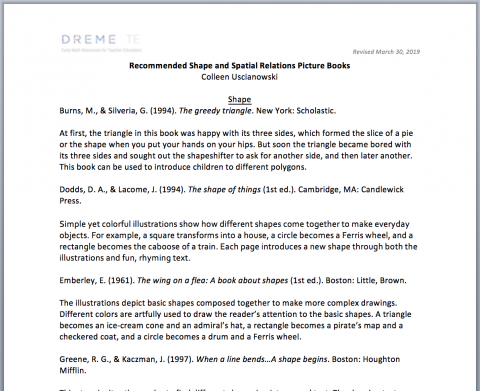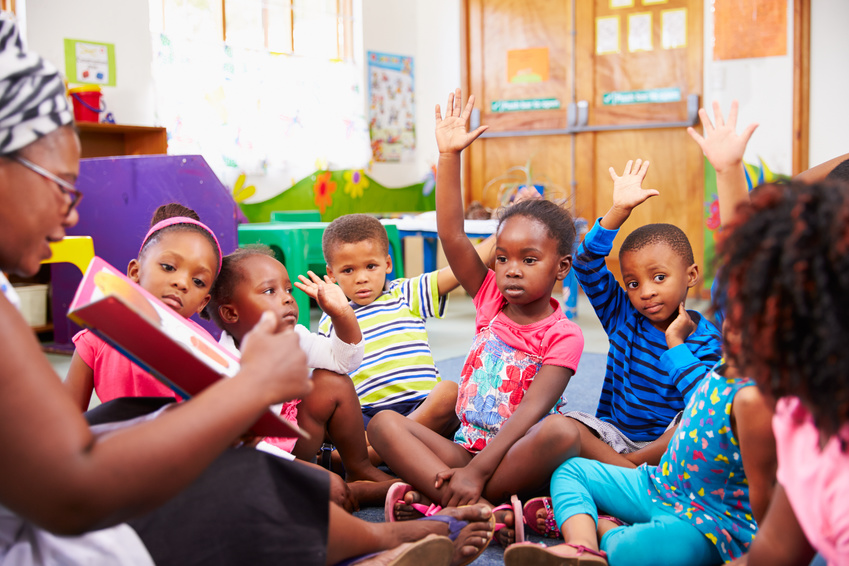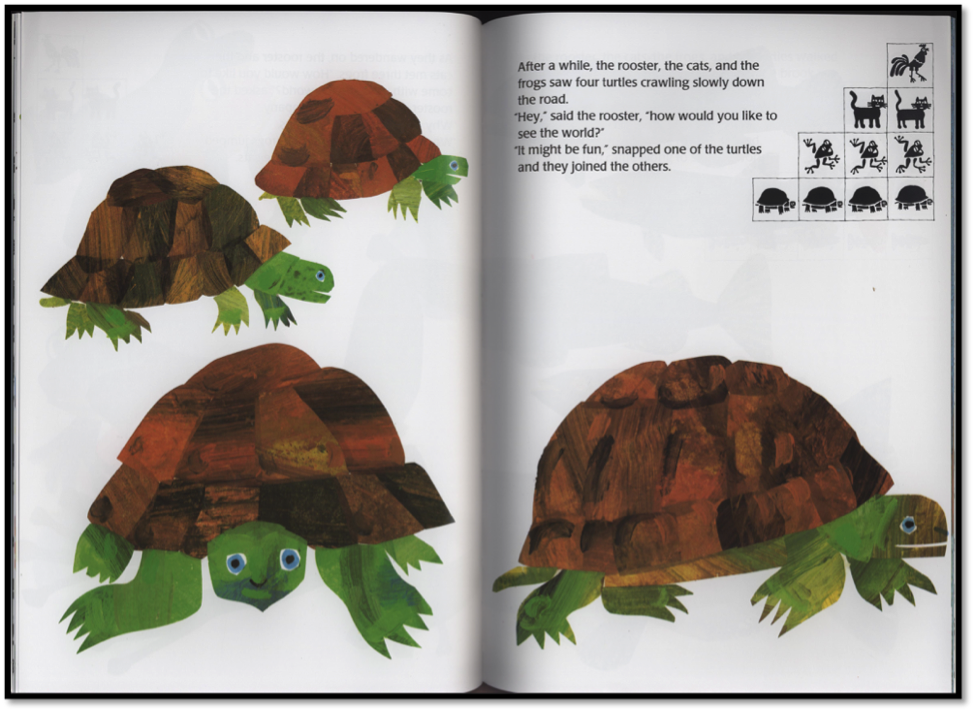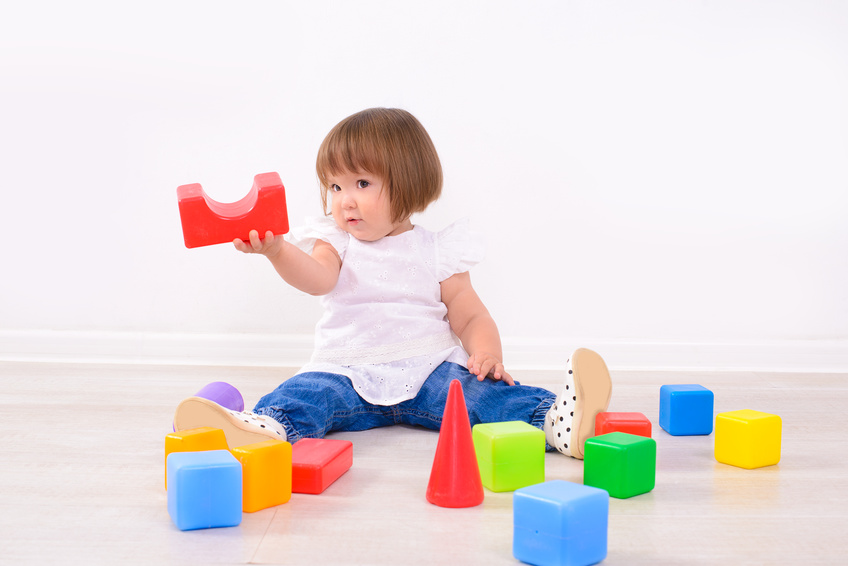Imagine that you, as a teacher, are preparing to read a book to a child or group of children and you want to use the story as an opportunity to develop understanding of shapes or spatial relations. This document describes what you might do.
by Colleen Uscianowski, Colleen Oppenzato, & Herbert P. Ginsburg
Revised March 30, 2019
Recommended Shape and Spatial Relations Picture Books

Supporting Engagement with Shape and Spatial Relations Books
Preparing to Read
You can use Analyzing Picture Books—An Overview with its downloadable Math Picture Book Analysis Guide to help you examine and select one or more shape and spatial relations books. Review How to Use Picture Books for some general tips for how to plan to read books with children.
Let’s consider a specific example from Round Is a Tortilla by Roseanne Greenfield Thong, which is a book about shapes. These pages show, among other things, different objects that are triangular in form.
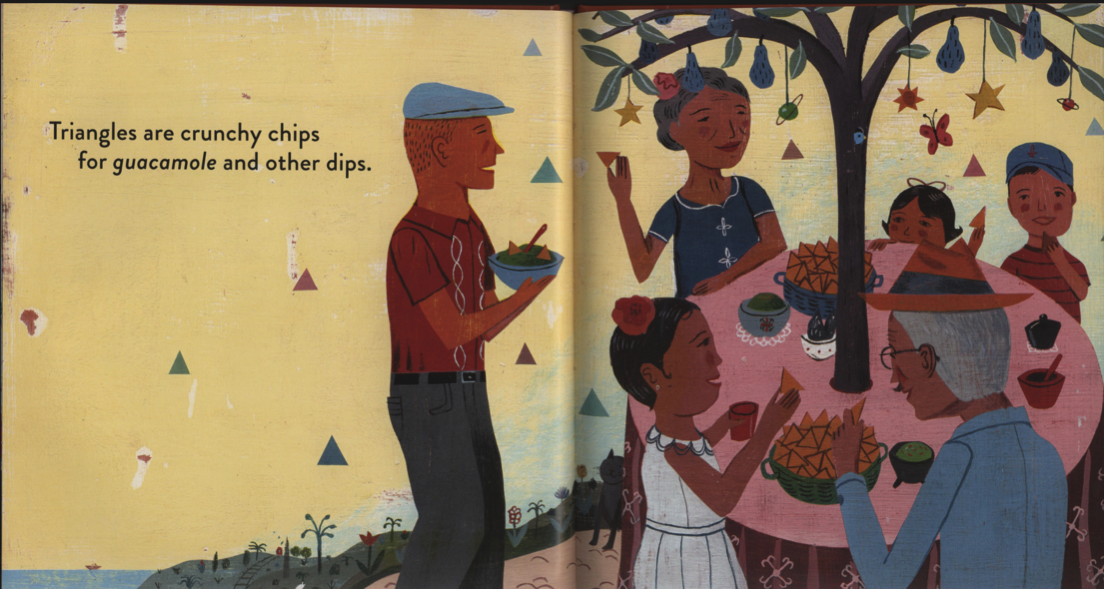
Look through the book from a child’s perspective. Think about what might help children understand the shapes on each page. Consider what children might find confusing; this will give you some clues about how you can help them develop their understanding. For example, on the right hand page above, there are tortilla chips shaped like triangles. However, they are oriented in different ways. Turning a triangle so its base (straight side) is not on the bottom may be confusing to children just learning what a triangle is. They may not see that the turned shape is still a triangle.
During Reading
Ask questions.
As appropriate, ask a variety of question types, both lower-level and higher-level.
- Lower-level questions are relatively simple and concrete, addressing what children see directly on the page or remember from a previous page, as well as key words from the text that you think they might not understand. For example:
- Recall: What shape did we see on the page before this one?
- Label: What shape is this?
- Describe: How many sides does this triangle have?
- Higher-level questions are relatively complex and abstract, asking children to engage in deep thinking and go beyond the literal events on the page. For example:
- Reason: If we added one more side to the triangle, would it still be a triangle?
- Compare: Do a triangle and a square have the same number of sides?
- Relate: Can you think of another food that is shaped like a triangle?
Explore children’s responses.
Elaborate on children’s responses and follow up with open-ended questions asking children to explain their reasoning. For example:
Teacher: (points to the little girl) You said the little girl is holding a triangle. What shape is the chip this woman is holding? (points to triangle in woman’s hand, which is oriented differently)
Child: I don’t know. It looks different. This is a triangle (pointing to little girl’s triangle). But this is not a triangle – it’s sideways.
Teacher: Ahh, yes, they look different. Is there something that is the same?
Child: (points to the sides of one triangle) One, two, three. (points to the sides of the other triangle) One, two, three!
Teacher: You counted the sides! What did you notice?
Child: They both have three sides.
Teacher: So, is it a triangle?
Child: I guess so.
Teacher: It is. Can you find some other triangles on the page?
Model complex thinking.
Children learn by listening to you, the adult, model productive ways of thinking about the story. For example:
- Teacher: I can count the sides to help me figure out if this shape is a triangle. Let me see…one, two, three. It has 3 straight sides, so it’s a triangle. But this star shape has more sides than that. I count… one, two, three, four, five, six, seven, eight, nine, ten sides. So, it’s not a triangle.
More Examples for Shape and Spatial Relations Books
Shapes aren’t the only geometry topics that can be examined using storybooks. Spatial relations—or the relationships of objects to one another and objects to yourself— may also be explored through storybooks. The next example is from Albert is Not Scared by Eleanor May. In this story, Albert is a mouse who is too frightened to go on any of the rides at the amusement park. On this two-page spread, spatial words are used to describe the motion of the carousel ride.
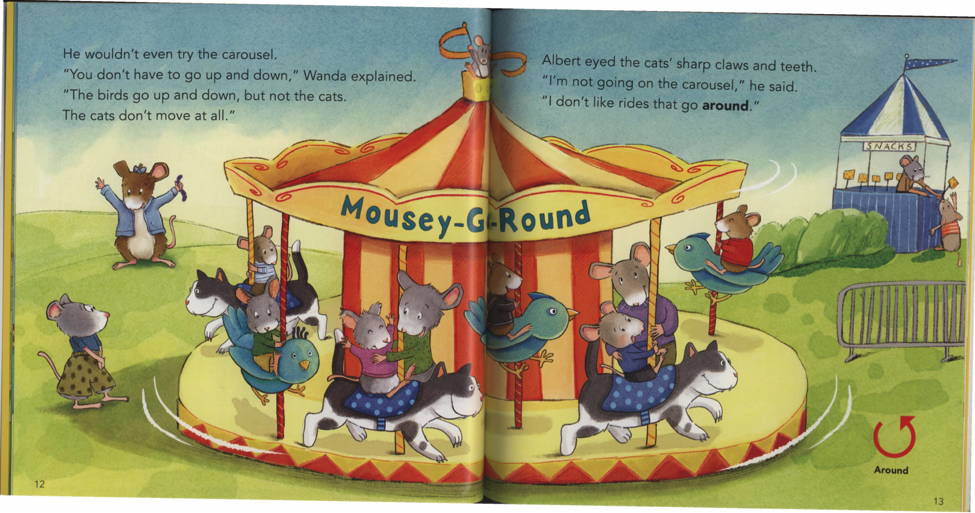
What Children Can Learn
Using Albert is Not Scared, a teacher can focus on a variety of spatial concepts that children need to understand. Children need to learn the following about spatial thinking.
Spatial words can describe the movement of objects.
- How do the birds move on the carousel? (Look for children to use spatial words like up and down.)
- What direction is the carousel moving? (Look for children to use a spatial word like around.)
Spatial words can be used to describe locations of objects.
- Where is Wanda standing? Is she standing close to the carousel or far away? (Look for children to describe Wanda’s location using words like on the left or farther away.)
- Who is standing the farthest away, Wanda or the Albert the mouse?
- Can you find the three blue birds? Which one is up the highest? Which one is the lowest?
Children use spatial reasoning in their everyday lives. They can make sense of the spatial concepts in this book by relating it to their own experiences going on rides at an amusement park or carnival.
- Imagine yourself in the story acting out the movement of the rides. Can you spin around like the Mousey-Go-Round?
- Can we make a train with our bodies and move forward like the Chew Chew Train? Now let’s move backward.
Questioning the Child
As you read books with spatial concepts, you should ask both lower-level and higher-level questions.
Lower-level Questions
Ask children to describe the scene to find out how many relevant spatial words they use spontaneously.
- What’s happening on this page?
Ask children to describe the location and movement of objects and characters as you point them out.
- How is the carousel moving? Does Albert like this kind of motion?
Ask children to recall what happened on previous pages in the story:
- Do you remember the Dare Devil Drop? What direction did it move? How about the Pi-Rat Ship? What direction did that ride move?
- Has Albert gone on any rides yet?
If the children struggle to use precise spatial words, model how to describe locations and movements with spatial language:
- Teacher: Where are Wanda and Albert standing?
- Child: They’re standing there.
- Teacher: Wanda is standing close to the carousel, while Albert is standing farther away from the carousel.
Higher-level Questions
Ask children to relate the story to their lives and use their bodies or hands to mimic the movement of the objects and characters in the story.
- Can you think of something else that goes up and down like the birds on the carousel? Can you show me up and down with your hand?
- Can you make your hands go around just like the carousel ride?
Ask children to compare the movements of the objects:
- (After children have demonstrated the circular motion of the carousel ride) Do the birds and the cats on the ride move in the same direction? How are they different?
Ask children to interpret the character’s motivations and feelings:
- Do you think Albert really doesn’t like the Mousey-Go-Round because he doesn't like rides that go around? Why else might he be scared of the ride?
You can respond to children’s answers to any of these questions by asking:
- How do you know?
- Why?
- Can you explain what you said?

